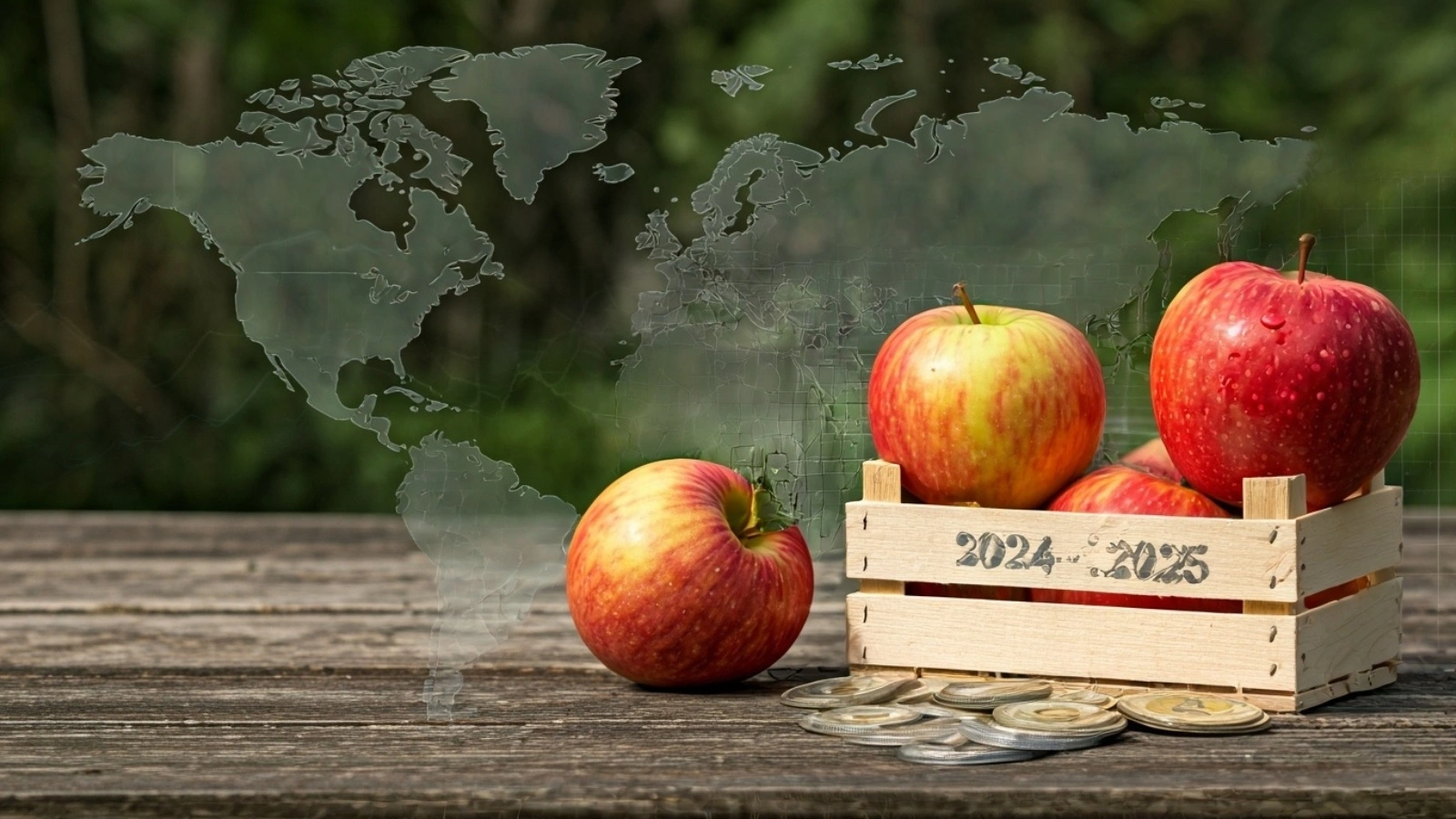The apple market has long been one of the most important sectors of European and international agricultural production. The year 2024-2025 is characterised by particular challenges and changes in both production and trade flows, directly affecting prices and prospects for producers and traders.
Price developments in the EU
In April 2025, the average price of apples in the EU reached €95.6 per 100 kg. Although this price level shows a slight decrease of 1.8% compared to the previous month (March 2025), it maintains an increase of 4.5% compared to April 2024 and a significant increase of 18.2% compared to the five-year average. At the national level, there are large variations:
Poland: The average price was 71.1 euro/100 kg, a decrease of 0.9% compared to March, but a significant increase of 19.4% year-on-year.
Italy: Price at EUR 98.0/100 kg, up 2.0% on the previous month and almost unchanged year on year.
France: Price decrease to EUR 124,3/100 kg (-7,6% monthly, -3,6% annual).
Germany: Increase to 88.9 EUR/100 kg, an increase of 2.2% monthly and 11.1% annually.
These fluctuations reflect the dynamics of the European market, with Poland maintaining its low cost advantage, while countries such as France and Italy continue to offer higher priced products due to quality features.
Apple production: down in Europe, up globally
Total EU apple production for 2024 is estimated at 10,389 thousand tonnes, a decrease of 9.7% compared to 2023. Significant decreases are observed in countries such as:
Austria: -49,1% (59 thousand tonnes)
Belgium: -34,3%
Czech Republic: -76,3%
Germany: -15,8%
Poland: -19.6% (3,190 thousand tonnes)
On the other hand, increases were recorded in Greece (+56.4%), Italy (+8.1%), Spain (+9.4%) and Denmark (+40.0%). These figures reflect the dynamism and local variations in European production, as well as the influence of weather conditions and farming practices.
Globally, apple production reaches 97,309 thousand tonnes, with China dominating with a share of 51% (49.6 million tonnes), followed by the US, Turkey, Poland and India. The 27-nation EU has a 12.4% share of global production, maintaining a significant presence despite a decline in 2024.
Exports and Imports of Apples
In the export sector, the EU exported 945,582 tonnes of apples in 2023-2024, with the largest markets being the UK (125,463 tonnes), Egypt, Saudi Arabia, India, Kazakhstan and Brazil. Compared to the average of the last five years, there is a decrease in exports of around 12%. This is due to both lower production and increased internal competition from third countries.
EU imports increased to 251,971 tonnes in 2023-2024. The main source countries are Chile, New Zealand, South Africa, North Macedonia and Moldova. This increase demonstrates the European market's need for additional quantities in the off-harvest period.
Greece in the European Charter
Greece shows an impressive rise in production, with an estimated increase of 56.4% in 2024, reaching 287 thousand tonnes. This ranks it 7th among EU producers, which confirms the dynamism of the Greek sector, particularly in terms of variety, quality and adaptation to international trends.
Main Global Trends
In international trade, China is the leading exporter of apples (980,846 tonnes), followed by Italy, the USA and Poland. Germany, India and Russia stand out on the import market, while international trade is constantly shaped by fluctuations in production, political developments and trade agreements.
Conclusions and Perspectives
2024-2025 is expected to be a transitional period for the apple market, with the main challenges being to maintain competitiveness, optimise trade flows and ensure quality and traceability. Price trends show relative stability with mild fluctuations, while production in Europe appears to be shrinking, creating opportunities but also pressures for producers and traders.
Greece, with its dynamic growth in production and adaptability to market demands, has the potential to further strengthen its position both within the EU and in international trade. The exploitation of quality, innovation and export opportunities is the key to the new era of the Greek and European apple.

